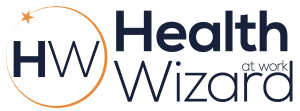At Health Wizard at Work, many of our new clients come to us because they’ve been directed by the HSE, insurers, or health and safety consultants to improve their hearing surveillance programs. Often, they simply don’t know where to start, which is where we step in to help guide them.
The Importance of Hearing Surveillance
When we onboard clients, we highlight the bigger picture around hearing tests. It’s not just about complying with the law; hearing surveillance offers a wide range of benefits, including:
- Impr
 oving workplace safety culture
oving workplace safety culture - Maintaining long-term hearing records for staff
- Protecting employees’ health and wellbeing
- Preventing productivity losses due to hearing impairment
- Enhancing staff engagement
- Protecting the company from legal risks
The Noise at Work Regulations 2005 are the foundation, but we spend a lot of time emphasising how the real value comes from the positive effects on staff safety, health, and productivity.
HSE L108: Key Updates from the 3rd Edition
However, back during the Covid-pandemic, the HSE updated HSE L108 guidelines, which outline how hearing surveillance should be conducted. These changes, made in the 3rd edition, have now pretty much bedded-in and include some important distinctions from earlier editions of L108:
1. GPs Are No Longer Involved in Hearing Surveillance
In the 2nd edition of HSE L108, employers could refer workers to their GP for hearing tests. The 3rd edition now explicitly prohibits this (unless your GP is also an OH specialist). Most GPs are generalists and don’t have the specialist knowledge required to properly assess noise-induced hearing loss (NIHL) or to accurately assess the risks and health conditions related to occupational noise exposure. Now, hearing tests at work must be carried out by occupational health professionals who are trained in occupational hearing checks. This supports provision of a consistent approach far and wide.
2. The Shift to Occupational Health Specialists
The new guidelines stress that only qualified occupational health professionals should handle this surveillance. This further supports adherence to standards and involvement of experts who are better equipped to interpret audiometry results and provide accurate, workplace-specific advice.
3. A Stronger Focus on Early Detection of Noise Induced Hearing Loss
The 3rd edition puts greater emphasis on using health surveillance as a proactive tool for early detection of NIHL. By identifying hearing damage early, employers can take corrective action—such as adjusting hearing protection or modifying workplace environments— to prevent hearing damage before it becomes severe and to take steps to prevent further deterioration.
4. Increased Employer Responsibility
The earlier guidance was a little flexible in terms of how employers should implement health surveillance, and many may have relied on GPs due to convenience or cost. Under the new guidelines, employers are now more accountable for ensuring that proper hearing surveillance is conducted. It’s no longer acceptable to pass this off to a GP or general health provider. Employers must engage occupational health specialists, act on surveillance results, and take steps to reduce noise exposure where necessary. Detailed records must be kept, and action must be taken if hearing damage is detected.
5. Fit for Work
The 3rd edition of L108 places greater emphasis on ensuring a worker is fit for work than in previous editions. The concept of “fit for work” is an essential component of Occupational Health and – whilst it is rare for someone not to be fit for work as a result of their hearing – L108 now makes it an unambiguous part of the results an employer should receive from testing.
What Does This Mean for Employers?
The updated HSE guidelines mean that workers are now assessed by experts who specialize in noise-related health risks, resulting in more accurate and timely assessments. It also helps reduce the workload on GPs, ensuring faster response times and better care for workers.
For businesses, these changes offer a chance to take a proactive approach to hearing health. By catching potential NIHL early, employers can avoid long-term costs and improve employee well-being. At Health Wizard at Work, we’ve reviewed our processes in line with these changes and found that, despite a rise in referrals (driven by some technicalities around NIHL), our approach reduces costs, improves efficiency and makes resolution timely.
Conclusion
The transition from the 2nd to the 3rd edition of HSE L108 represents a major shift in how hearing tests are conducted in the workplace. GPs are no longer involved, and occupational health professionals now take centre stage, ensuring more consistent and accurate results. This proactive approach benefits both employers and employees, allowing for early intervention and better management of workplace hearing risks. At Health Wizard at Work, we’ve updated our training materials and our referral process to reflect these new guidelines and save time and money, maintaining our commitment to helping our clients improve their surveillance programs.
If you’re looking to cut costs, simplify or generally get on top of your workplace hearing health program, get in touch here




